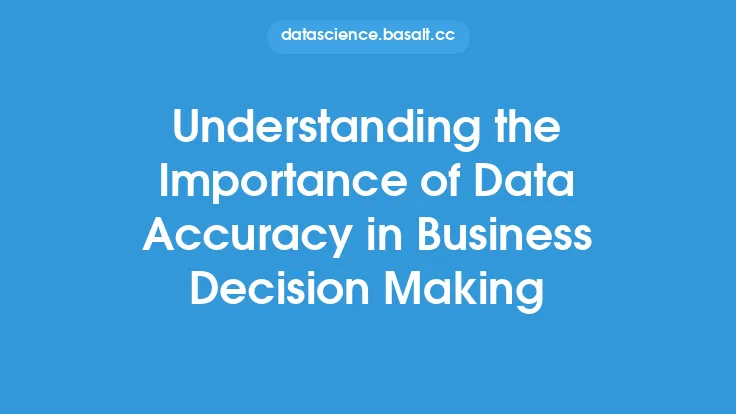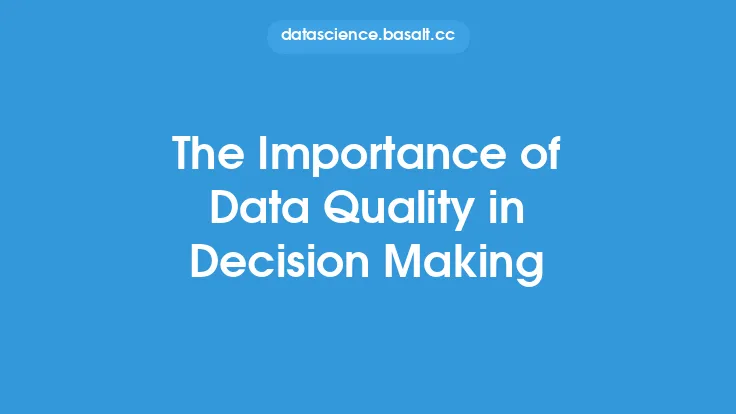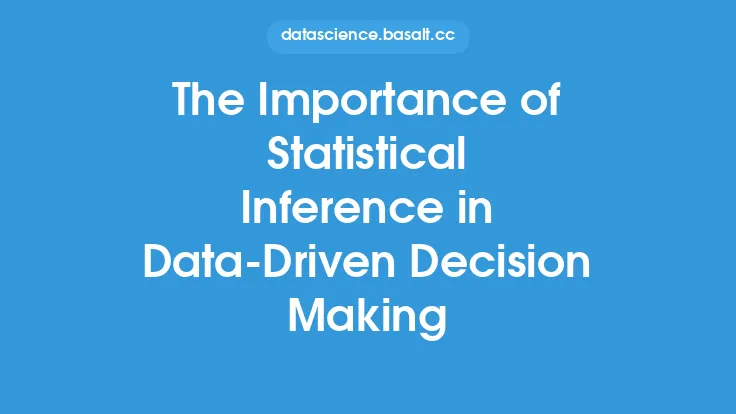In today's data-driven business landscape, organizations rely heavily on data to inform their decision-making processes. The accuracy and reliability of this data are crucial in ensuring that business decisions are well-informed and effective. One critical aspect of data quality that plays a significant role in this context is data consistency. Data consistency refers to the degree to which data values are consistent with the defined rules, formats, and standards within an organization. It is essential to understand the importance of data consistency in business decision making, as it has a direct impact on the validity and reliability of the insights derived from the data.
What is Data Consistency?
Data consistency is a measure of how well the data conforms to the defined rules, formats, and standards within an organization. It involves ensuring that data values are accurate, complete, and consistent across different systems, applications, and datasets. Data consistency is critical in maintaining data quality, as it helps to prevent errors, inconsistencies, and inaccuracies that can lead to incorrect insights and poor decision making. There are several types of data consistency, including entity consistency, referential consistency, and semantic consistency. Entity consistency refers to the consistency of data values within a single entity or table, while referential consistency refers to the consistency of data values across different entities or tables. Semantic consistency, on the other hand, refers to the consistency of data values in terms of their meaning and interpretation.
The Importance of Data Consistency in Business Decision Making
Data consistency is essential in business decision making, as it ensures that the insights derived from the data are accurate, reliable, and trustworthy. Inconsistent data can lead to incorrect insights, which can result in poor decision making and ultimately, negative business outcomes. For instance, if an organization's customer data is inconsistent across different systems, it can lead to incorrect customer segmentation, targeting, and personalization, resulting in reduced customer satisfaction and loyalty. On the other hand, consistent data enables organizations to make informed decisions, identify trends and patterns, and optimize their business processes. Data consistency also helps to build trust in the data, which is critical in ensuring that stakeholders have confidence in the insights and decisions derived from the data.
The Consequences of Inconsistent Data
Inconsistent data can have severe consequences on business decision making, including incorrect insights, poor decision making, and negative business outcomes. Inconsistent data can also lead to a lack of trust in the data, which can result in reduced confidence in the insights and decisions derived from the data. Furthermore, inconsistent data can lead to increased costs, reduced efficiency, and decreased productivity, as organizations may need to spend more time and resources to correct errors and inconsistencies. In extreme cases, inconsistent data can also lead to regulatory non-compliance, reputational damage, and financial losses.
Ensuring Data Consistency
Ensuring data consistency requires a combination of people, processes, and technology. Organizations can ensure data consistency by establishing clear data governance policies, procedures, and standards. This includes defining data formats, rules, and standards, as well as establishing data validation and verification processes. Organizations can also use data quality tools and technologies, such as data profiling, data cleansing, and data validation, to identify and correct errors and inconsistencies. Additionally, organizations can establish data stewardship programs, which involve assigning data ownership and accountability to specific individuals or teams. This helps to ensure that data is accurate, complete, and consistent, and that any errors or inconsistencies are promptly identified and corrected.
Data Consistency and Data Integration
Data consistency is critical in data integration, as it ensures that data from different sources is consistent and accurate. Data integration involves combining data from different sources, such as databases, files, and applications, into a single, unified view. However, data integration can be challenging, as data from different sources may have different formats, structures, and standards. Ensuring data consistency in data integration requires careful planning, design, and execution, as well as the use of data quality tools and technologies. Organizations can use data integration tools, such as extract, transform, and load (ETL) tools, to integrate data from different sources and ensure data consistency.
Data Consistency and Data Warehousing
Data consistency is also critical in data warehousing, as it ensures that data is accurate, complete, and consistent across different datasets and systems. Data warehousing involves storing data from different sources in a single, centralized repository, such as a data warehouse. However, data warehousing can be challenging, as data from different sources may have different formats, structures, and standards. Ensuring data consistency in data warehousing requires careful planning, design, and execution, as well as the use of data quality tools and technologies. Organizations can use data warehousing tools, such as data transformation and loading tools, to ensure data consistency and accuracy.
Conclusion
In conclusion, data consistency is a critical aspect of data quality that plays a significant role in business decision making. Ensuring data consistency is essential in maintaining data quality, preventing errors and inconsistencies, and ensuring that insights derived from the data are accurate, reliable, and trustworthy. Organizations can ensure data consistency by establishing clear data governance policies, procedures, and standards, using data quality tools and technologies, and establishing data stewardship programs. By prioritizing data consistency, organizations can make informed decisions, identify trends and patterns, and optimize their business processes, ultimately leading to improved business outcomes and increased competitiveness.





